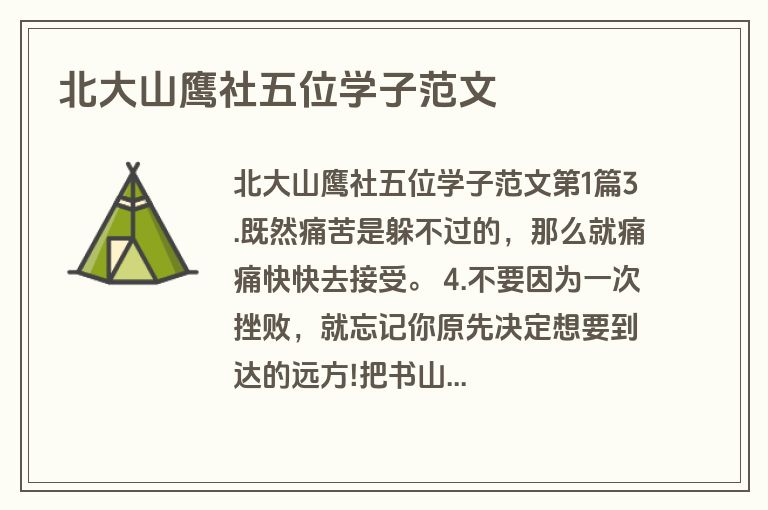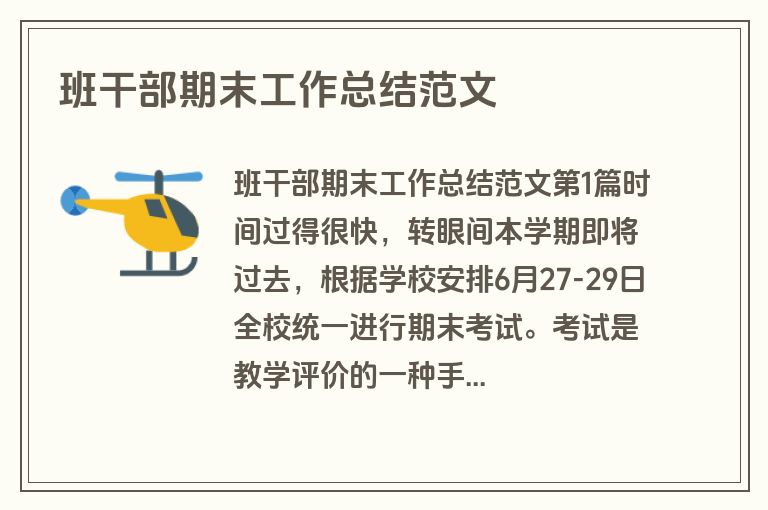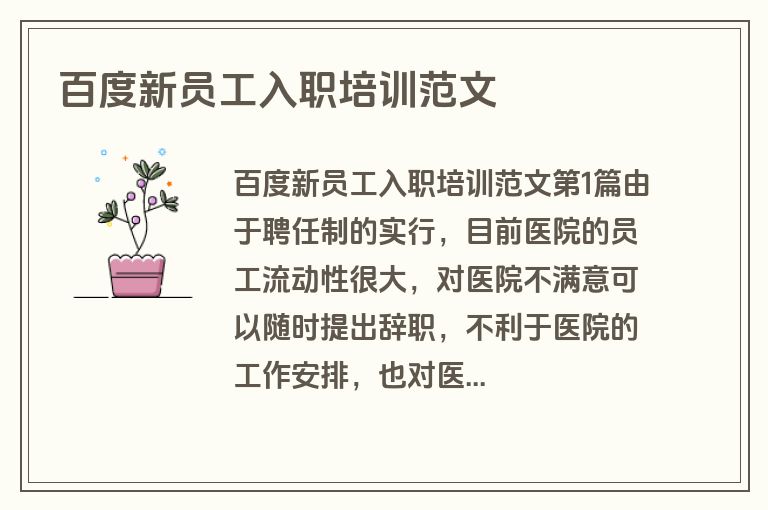情态动词的用法小结范文第1篇
教学目标:
1.知识目标:掌握本课的大纲词汇和情态动词can的用法。
2.能力目标:1)能听懂会不会那些体育运动项目话题的有关的简单会话。
2)能用can或cant表述会不会那些体育运动项目。 3.文化意识:了解国内外常见的体育运动项目,以及运动项目的种类。 4.学习策略:培养学生在大信息量(许许多多的运动项目中)的语言活动中搜索处理语言信息,发现,归纳学习重点,从而掌握本单元重点学习内
容。
教学内容: 1.大纲词汇sport, throw, race, field, 新课标词汇high jump, long jump, event, track
2.句型 he can / can‟t
教学重点: 用情态动词can表示会不会那些体育运动项目的句子
教学手段: 多媒体。
教学步骤
教学第一个环节: 创设情景,导入新课
1. 将有关表示体育运动项目的图片由运动员进行曲连接起来,向
学生们展播,从而引出sports meeting和sports event词汇。 2. 要求学生以brainstorm的方式说出what sport they know 3.把学生已知和未知的有关体育运动项目的 图片和单词卡片给学生(4人一组)把词
与图联系起来。 (这是学生们做练习的情景) (以下是课堂练习内容)
baseball skate swim basketball badminton ski football 100-meter hurdles high jump tennis surf table tennis long jump 100-meter race shot put long jump
4. 学习新单词
throw the shot put do the high jump do the long jump do the 200 – meter run run the 110-meter hurdles
5. 检查单词
1)个人或集体朗读单词。
2)做游戏(根据老师所给的图片一人比划另一人猜出这个单词或一人用英语说出图片的意思另一人 猜出这个单词。(3组练习)
设计意图:教材1.1中教学内容生词量较大,平时又很少遇到,学习起来比较枯燥,难以记住。但用音乐将图片连接起来,充满激情的音乐营造了欢快的学习气氛,使学生情绪高涨,同时又陶冶了学生的情操。说出已知的单词和图与词连接的练习,可以展示学生自主学习的成果。让学生听着音乐,看着图片,在不知不觉中学习了单词,并自然而然地让学生融于英语学习的情境中,大大激发了他们的学习兴趣,又以游戏的形式检查单词,有趣的画面,难忘的表演,吸引了学生的注意力加深了他们对单词的印象。为后面的学习内容打下了基础
在这个教学环境中,学生是活动的主体,教师只充当了“节目主持人”的角
色。
第二个环节:师生互动,学习探究
1. 看海报,回答问题 t: what‟s the poster about?
ss: sports events
t: how many events for boys?
ss: ten
t: how many events for girls?
ss: seven 2.听录音完成1.1练习(巩固所学单词)
3听录音完成1.2练习。
gary can run the 110-meter hurdles. true false he can do the high jump. true false he‟s fast. true false he can‟t throw the shot put. true false he can do the long jump. true false 4.让学生朗读1.2和1.3的句子 。学生通过观察,讨论,总结,归纳can
的用法。 设计意图:
听的环节是“输入”的过程,带着问题听,让学生在听的过程中有的放矢,有效捕捉信息,同时又提醒学生注意观察并发现需要注意的表达方式,为后面的语言实践准备实用句型。这种让学生在具体的语境中发现新句型的教学方法,能有效地提高学生分析问题和解决问题的能力,避免了传统的教师为主体的抽象的语法说教,调动了学生思维积极性,给学生提供了提高观察能力,分析能力和归纳总结能力的发展平台。学生们以小组讨论的方式进行观察,探讨,分析,归纳,得出正确结论。让所有的学生都参与讨论探究,这既体现了以学生发展为本的教育思想,又调动了学生的积极性与创造性。学生们自己发现的规律要比老师讲解所学到的规律在脑海中
的印象深刻得多,理解的透彻。 第三个环节:合作交流,巩固提高
1.看图说话 (i can / can‟t he can / can‟t they we
设计意图:
在这个环节中,我向学生提供了 具有直观性的图画,让学生觉得有内 容说,新学的句型在这一活动中得到
充分运用和巩固。
(学生练习时的情景) 2.做链接游戏 4人一组。 第一个同学说 i can swim. 第二个同学说 i can‟t swim, but i can skate 第三个同学说:i can‟t skate, but i can do
the high jump. 第四个同学说:i can‟t do the high jump, but i can do the long jump.
设计意图:
变换语境操练是机械模仿进一步的发展,对语言运用的能力的要求又有所提高,有利于开发学生的创新能力和求异思维能力,这样的活动增加了
趣味性,使紧张的气氛得到缓解。 3. 采访同学看谁能做:要求用句型 can you do提问,用 i can
根据我课前调查我写了以下词组
play basketball,
sing well run fast, dance well, play the piano, run the 100-meter race. 学生们可以下位子采访,谁先找到这六位同学,谁得第一,并给与奖励。我又让能唱能跳的学生在班上即兴表演,又一次掀起了高潮。
设计意图:
新课程标准倡导主动参与,乐于探索,勤于思考,培养学生收集和处理语言信息的能力。通过这一环节的练习,不但学生的语言技能得到了提高,而且他们的情感态度和学习策略都得到了培养,同时他们的语言知识还得到了复习和巩固。这样的练习可以充分调动学生的参与热情,激发学生的
学习兴趣。
4. 让学生用what can you do? 及本节课所学的句型编一个对话,内容是学生会体育部和文艺部招聘人员。(两人一组)
a: what club do you want to join? b: we want to join the music club./ the sports club.
a: ___________________? b: i can sing / play basketball. a: ___________________?
b: yes, i can.
a: ____________________?
b: no, ________________. a: ok. welcome to join us.
设计意图:
让学生体验不同的角色,参与实践,合作交流,从而提高语言的运用能力。让所有学生全面参与,使学生的思维一直处于积极的状态,提高课堂教学
质量 教学反思:
情态动词的用法小结范文第2篇
(本条可参照ANY的用法。) NEED可用于:
1.否定句/含有否定意义的句子 1)否定句
含not/hardly/never/nobody等词语。 I needn’t say anything. He need hardly advise me. You never need tell me this or that. Nobody need help me. I don’t think he need come.(否定转移)
注:NEEDN’T的意思其实有三种,即不必要/不一定/不应该,视具体语境而定。 2)含有否定意义的句子
含only/but/all/before/than等词语。 He need only wait here. You need but consider the matter to understand its importance. That’s all that need be said.
Do not stay longer than you need. There was another hour before I need go out into the cold. 2.疑问句/表示疑问的从句 1)疑问句(包括否定疑问句) Need he say it again? 2)表示疑问的从句
I wonder whether/if I need see her. 3.条件句
含if/unless等词。
If he need come, he will. 本条要点简单概括起来就是,NEED不能用于肯定句。以下的各种用法也遵循这条规则。
二、NEED与时态 1.现在时
NEED常用于现在时。 You needn’t stay. 2.将来时
You needn’t have your blood pressure taken tomorrow. 3.过去时
NEED的过去式仍然是NEED。 1)过去时间由一过去时间状语表示 He need not come yesterday. 2)过去时间由另一过去时动词表示。 All he need do was to inquire. It was clear that he need never trouble to get up at seven again. I told him he needn’t be in a terrible fix. 注:表示过去的NEED常用于间接引语中。 (本条可参照must的用法)
三、NEED与虚拟语气 1)NEED用于虚拟条件句
(本条可参照虚拟条件句的构成及用法。) If money were useless, we need not struggle for it. If you had been careful enough, you need not have suffered. 注:本条用法较为少见。
2)NEED单独使用:NEEDN’T HAVE DONE (本条可参照SHOULDN’T HAVE DONE的用法。) You need not have worried. 注:NEED HAVE DONE的形式较为少见
Need you have scolded him so severely for his bad work? He had done his best.(否定意味)
He need have gone and sent that letter in person.(实际上没有做)
四、NEED与推测
NEEDN’T表示“不一定”。 (本条可参照must/can的用法。) 1) NEEDN’T+BE
It needn’t be hot in Florida now. 对比:
It can’t be hot in Florida now.(一定不) It must be hot in Florida now.(一定) 2) NEEDN’T+HAVE DONE
He need not have seen much of the world, though he is an old man. 对比:
He can’t have seen much of the world, for he is just a little boy. He must have seen much of the world, for he has been traveling so widely.
五、NEED与问句 1)反意疑问句的构成 You needn’t go, need you? 2)答句的构成 --- Need he go? --- Yes, he must/has to/needs to. --- No, he needn’t.
(本条可参照must的用法)
六、情态动词NEED与实义动词NEED 1)使用范围
作为实义动词的NEED有人称、数和时态的变化,使用范围更为广泛,不受句子类型和时态的限制。在肯定句、过去时和将来时的句子中,一般使用作为实义动词的NEED。
He needs to see a doctor straightaway.(此处needs to不能换做need,因为本句是肯定句)
Will he need to start earlier? 注:
NEED TO BE DONE与NEED DOING可以互换,后者更为常用(这里的NEED均为实义动词)。 2)含义差别
情态动词的用法小结范文第3篇
教学目标:
1.知识目标:掌握本课的大纲词汇和情态动词can的用法。
2.能力目标:1)能听懂会不会那些体育运动项目话题的有关的简单会话。
2)能用can或cant表述会不会那些体育运动项目。 3.文化意识:了解国内外常见的体育运动项目,以及运动项目的种类。 4.学习策略:培养学生在大信息量(许许多多的运动项目中)的语言活动中搜索处理语言信息,发现,归纳学习重点,从而掌握本单元重点学习内
容。
教学内容: 1.大纲词汇sport, throw, race, field, 新课标词汇high jump, long jump, event, track
2.句型 he can / can‟t
教学重点: 用情态动词can表示会不会那些体育运动项目的句子
教学手段: 多媒体。
教学步骤
教学第一个环节: 创设情景,导入新课
1. 将有关表示体育运动项目的图片由运动员进行曲连接起来,向
学生们展播,从而引出sports meeting和sports event词汇。 2. 要求学生以brainstorm的方式说出what sport they know 3.把学生已知和未知的有关体育运动项目的 图片和单词卡片给学生(4人一组)把词
与图联系起来。 (这是学生们做练习的情景) (以下是课堂练习内容)
baseball skate swim basketball badminton ski football 100-meter hurdles high jump tennis surf table tennis long jump 100-meter race shot put long jump
4. 学习新单词
throw the shot put do the high jump do the long jump do the 200 – meter run run the 110-meter hurdles
5. 检查单词
1)个人或集体朗读单词。
2)做游戏(根据老师所给的图片一人比划另一人猜出这个单词或一人用英语说出图片的意思另一人 猜出这个单词。(3组练习)
设计意图:教材1.1中教学内容生词量较大,平时又很少遇到,学习起来比较枯燥,难以记住。但用音乐将图片连接起来,充满激情的音乐营造了欢快的学习气氛,使学生情绪高涨,同时又陶冶了学生的情操。说出已知的单词和图与词连接的练习,可以展示学生自主学习的成果。让学生听着音乐,看着图片,在不知不觉中学习了单词,并自然而然地让学生融于英语学习的情境中,大大激发了他们的学习兴趣,又以游戏的形式检查单词,有趣的画面,难忘的表演,吸引了学生的注意力加深了他们对单词的印象。为后面的学习内容打下了基础
在这个教学环境中,学生是活动的主体,教师只充当了“节目主持人”的角
色。
第二个环节:师生互动,学习探究
1. 看海报,回答问题 t: what‟s the poster about?
ss: sports events
t: how many events for boys?
ss: ten
t: how many events for girls?
ss: seven 2.听录音完成1.1练习(巩固所学单词)
3听录音完成1.2练习。
gary can run the 110-meter hurdles. true false he can do the high jump. true false he‟s fast. true false he can‟t throw the shot put. true false he can do the long jump. true false 4.让学生朗读1.2和1.3的句子 。学生通过观察,讨论,总结,归纳can
的用法。 设计意图:
听的环节是“输入”的过程,带着问题听,让学生在听的过程中有的放矢,有效捕捉信息,同时又提醒学生注意观察并发现需要注意的表达方式,为后面的语言实践准备实用句型。这种让学生在具体的语境中发现新句型的教学方法,能有效地提高学生分析问题和解决问题的能力,避免了传统的教师为主体的抽象的语法说教,调动了学生思维积极性,给学生提供了提高观察能力,分析能力和归纳总结能力的发展平台。学生们以小组讨论的方式进行观察,探讨,分析,归纳,得出正确结论。让所有的学生都参与讨论探究,这既体现了以学生发展为本的教育思想,又调动了学生的积极性与创造性。学生们自己发现的规律要比老师讲解所学到的规律在脑海中
的印象深刻得多,理解的透彻。 第三个环节:合作交流,巩固提高
1.看图说话 (i can / can‟t he can / can‟t they we
设计意图:
在这个环节中,我向学生提供了 具有直观性的图画,让学生觉得有内 容说,新学的句型在这一活动中得到
充分运用和巩固。
(学生练习时的情景) 2.做链接游戏 4人一组。 第一个同学说 i can swim. 第二个同学说 i can‟t swim, but i can skate 第三个同学说:i can‟t skate, but i can do
the high jump. 第四个同学说:i can‟t do the high jump, but i can do the long jump.
设计意图:
变换语境操练是机械模仿进一步的发展,对语言运用的能力的要求又有所提高,有利于开发学生的创新能力和求异思维能力,这样的活动增加了
趣味性,使紧张的气氛得到缓解。 3. 采访同学看谁能做:要求用句型 can you do提问,用 i can
根据我课前调查我写了以下词组
play basketball,
sing well run fast, dance well, play the piano, run the 100-meter race. 学生们可以下位子采访,谁先找到这六位同学,谁得第一,并给与奖励。我又让能唱能跳的学生在班上即兴表演,又一次掀起了高潮。
设计意图:
新课程标准倡导主动参与,乐于探索,勤于思考,培养学生收集和处理语言信息的能力。通过这一环节的练习,不但学生的语言技能得到了提高,而且他们的情感态度和学习策略都得到了培养,同时他们的语言知识还得到了复习和巩固。这样的练习可以充分调动学生的参与热情,激发学生的
学习兴趣。
4. 让学生用what can you do? 及本节课所学的句型编一个对话,内容是学生会体育部和文艺部招聘人员。(两人一组)
a: what club do you want to join? b: we want to join the music club./ the sports club.
a: ___________________? b: i can sing / play basketball. a: ___________________?
b: yes, i can.
a: ____________________?
b: no, ________________. a: ok. welcome to join us.
设计意图:
让学生体验不同的角色,参与实践,合作交流,从而提高语言的运用能力。让所有学生全面参与,使学生的思维一直处于积极的状态,提高课堂教学
质量 教学反思:
情态动词的用法小结范文第4篇
我边画简笔画边说: I can do a lot of things. What can I do? Do you want to know. Let me tell you. I can play table tennis.(画出第一幅图示并鼓励学生说出动词短语:play table tennis) . I can play the piano.(画出第二幅图示并鼓励学生说出动词短语play the piano). I can stand on my head.(画出第三幅图示并鼓励学生说出动词短语stand on my head). 然后我叫了五位学生,让他们做动作来告诉大家。我又问:What can he /she do? 让他们说出:I can.引出另外五个短语:play football, swim, roller blade, ski,ride a horse.接着让学生根椐学过的动词短语用句型Ican .I cannot.个自写出自己会做的事情和不会做的事情. 然后让学生利用句型:What can I do? Can you? Yes, I can.或No I can’t. 互猜彼此会做的事情和不会做的事情。这样可以让学生所学语言产生兴趣,从而激发学生的学习欲望调动学生的学习积极性。
这样通过大量的、反复的、多种形式的操练,要求学生在量中求质,在速度中求准确。
情态动词的用法小结范文第5篇
我边画简笔画边说: I can do a lot of things. What can I do? Do you want to know. Let me tell you. I can play table tennis.(画出第一幅图示并鼓励学生说出动词短语:play table tennis) . I can play the piano.(画出第二幅图示并鼓励学生说出动词短语play the piano). I can stand on my head.(画出第三幅图示并鼓励学生说出动词短语stand on my head). 然后我叫了五位学生,让他们做动作来告诉大家。我又问:What can he /she do? 让他们说出:I can.引出另外五个短语:play football, swim, roller blade, ski,ride a horse.接着让学生根椐学过的动词短语用句型Ican .I cannot.个自写出自己会做的事情和不会做的事情. 然后让学生利用句型:What can I do? Can you? Yes, I can.或No I can’t. 互猜彼此会做的事情和不会做的事情。这样可以让学生所学语言产生兴趣,从而激发学生的学习欲望调动学生的学习积极性。
这样通过大量的、反复的、多种形式的操练,要求学生在量中求质,在速度中求准确。
情态动词的用法小结范文第6篇
1. 概念: 情态动词: 表示说话者的某些观点或态度的词语.如 “能” , “或许” , “必须” , “需要” , “应该” 等. 2. 情态动词主要有: can, may, must, need, should, 这些情态动词后面 + 动词原形. 3. 用法
① can ⑴ 表示能力,意为”能, 会”. 如:
eg: I can play basketball. 我会打篮球.
---Can you play basketball ? 你会打篮球吗? --- Yes, I can. / No, I can’t. 是的, 我会. / 不, 我不会.
⑵ 表示怀疑、猜测,常用 be 连用, 放在否定句和疑问句中。如:
eg: He can’t be in the room. 他一定不在房间里.
⑶ 表示请求或允许, 多用于口语中, 意为”可以”, 相当于 may. 如:
eg: You can go now. 你现在可以走了.
② could ⑴ 是can 的过去式, 表示过去的能力. 如:
eg: I could swim when I was a child. 当我还是一个小孩子的时候我就会游泳了.
⑵ couldn’t: “不能” 用could 提问肯定和否定回答分别用 could, 和 couldn’t.
如:
eg: --- Could you skate last year? 你去年会滑冰吗?
--- Yes, I could. / No, I couldn’t. 是的, 我会. / 不, 我不会.
③ may ⑴ 表示推测, 意为“可能; 或许” 用于肯定句中.
eg: He may be a teacher. 他或许是一个老师.
⑵ 表示请求、许可, 意为”可以” 如: eg: ---May I borrow your book? 我可以借你的书吗?
--- Yes, you can. / No, you mustn’t. 是的, 可以. / 不, 你你禁止借书. 注意: 当由may 来提问的时候, 肯定回答我们用Yes, you can. 否定回答用 No, you mustn’t. ④ must ⑴ 表示“必须、应该“;
eg: You must do your homework. 你必须做作业.
⑵ 表示推测, “一定” 常与be 动词连用. eg: He must be in the classroom. 他一定在教室.
⑶ must + not = mustn’t 禁止
eg: You mustn’t smoke. 禁止吸烟.
⑷ must 放于句首提问, 肯定回答Yes, you must. 否定回答 No, you needn’t.
⑸ must 与 have to 的区别:
must强调主观的看法.
have to 强调的是客观因素. eg: I must do my homework. 我必须做作业.(个人看法)
I have to go home now, because my mother is ill. 我不得不回家,因为我妈妈病了.(客观原因所导致)
⑤ need ⑴ 作情态动词使用后跟动词原形. You needn’t come here so early.
⑵ 作实义动词使用后接to do, He needs to drink some water. 他需要喝些水. 变否定句: He doesn’t need to drink any water.
变疑问句: Does he need to drink any water? Yes, he does. / No, he doesn’t.
⑥ should “应该” 一般指应尽的某种义务.
eg: As a student, we should finish our homework. 作为一个学生,我们应该完成作业.
练习:
(
) 1. Mr Wang ______ be in Nanjing now, he went to Beijing only this morning.
A. mustn’t
B. may not
C. can’t
D. needn’t (
) 2. –Must I saty at home, Mum?
--No, you ______.
A. needn’t
B. mustn’t
C. don’t
D. may not (
) 3. –Can you go swimming with us this afternoon?
--Sorry, I can’t. I _____ take care of my little sister at home because my mother is ill.
A. can
B. may
C. would
D. have to (
) 4. –May I go to the cinema, Mum? --Certainly. But you ______ be back by 11 o’clock.
A. can
B. may
C. must
D. need (
) 5. To make our city more beautiful, rubbish ______ into the river.
A. needn’t be thrown
B. mustn’t be thrown
C. can’t throw
D. may not throw (
) 6. –May I go out to play basketball, Dad? --No, you ______. You must finish your homework first. A. mustn’t
B. may not
C. couldn’t
D. needn’t (
) 7. –Where is Jack, please ?
--He _____ be in the reading room. A. can
B. need
C. would
D. must (
) 8. –Who is the man over there? Is it Mr Li?
--No, it ______ be him. Mr Li is much taller. A. musn’t
B. may not
C. can’t
D. needn’t
(
) 9. These books ______ out of the reading room. You have to read them here.
A. can’t take
B. must be taken
C. can take
D. mustn’t be taken (
) 10. –Mum, may I watch TV now?
--Sure, but you ______ help me with my housework first.
A. can
B. may
C. must
D. could (
) 11. The boy said he had to speak English in class, but he ______ speak it after calss.
A. could
B. didn’t have to
C. might
D. shouldn’t (
) 12. –Must we hand in the papers now?
--No, you ______.
A. can’t
B. may not
C. mustn’t
D. needn’t (
) 13. John ______ go there with us tonight, but he isn’t very sure about it.
A. must
B. can
C. will
D. may (
) 14. Even the top students in our class can’t work out this problem. So it ______ be very difficult.
A. can
B. may
C. must
D. need (
) 15. Put on more clothes. You ______ be feeling cold with only a shirt on.
A. can
B. could
C. would
D. must (
) 16. It’s still early. You ______.
A. mustn’t hurry
B. wouldn’t hurry
C. may not hurry
D. don’t have to hurry (
) 17. –May I stop here?
--No, you ______.
A. mustn’t
B. might not
C. needn’t
D. won’t (
) 18. A computer ______ think for itself, it must be told what to do.
A. can’t
B. couldn’t
C. may not
D. might not (
) 19. –Could I borrow your dictionary?
-- Yes, of course you _______.
A. might
B. will
C. can
D. should (
) 20. Peter ______ come with us tonight, but he isn’t very sure yet.
A. must
B. may
C. can
D. will (
) 21. Michael ______ be a policeman, for he’s much too short.
A. needn’t
B. can’t
C. should
D. may (
) 22. ______ I know your name?
A. May
B. Will
C. Shall
D. Must (
) 23. You ______ be more careful next time.
A. have to
B. may
C. must
D. might (
) 24. You ______ miss the lesson, though we ______ have it on Thursday.
A. mustn’t; needn’t
B. needn’t; mustn’t
C. mustn’t; mustn’t
D. needn’t; needn’t (
) 25. This pen looks like mine, yet it isn’t. whose ______ it be?
A. must
B. may
C. would
D. can (
) 26. What kinds of homes will we live in the future? Nobody ______ be sure, but scientists are working out new ideas now.
A. will
B. may
C. can
D. must (
) 27. I ______ like to know where you were born.
A. shall
B. should
C. do
D. may (
) 28. ______ you be happy!
A. Might
B. Must
C. Wish
D. May (
) 29. A teacher ______ do every exercise, but a student must.
A. may not
B. needn’t
C. can’t
D. mustn’t (
) 30. The matter ______ be changed into a gas, but it _______ be heated to its boiling point.
A. may; needn’t
B. may; can
C. mustn’t; needn’t
D. can; must (
) 31. Teachers and students ______ look coldly at you for a day or two, but there are friendly feelings in their hearts.
A. must
B. can
C. may
D. should (
) 32. Cars and buses ______ stop when the traffic lights turn red.
A. can
B. need
C. may
D. must (
) 33. –Do you think his story ______ true? --I don’ think so. But it sounds good.
A. must be
B. may be
C. can be
D. has to be (
) 34. Look out! The knife is very sharp. You ______ cut your finger.
A. need
B. must
C. should
D. may (
) 35. –How long ______ the book be kept?
--For two weeks, but you ______ return it on time.
A. can; may
B. may; need
C. can; must
D. must; need (
) 36. – May I have an apple, Mum?
--Certainly. But you ______ wash your hands first?
A. may
B. must
C. can
D. need (
) 37. –There is a lot of smoke coming out of the teaching building there.
--Really? It ______ be a fire, most probably.
A. can
B. ought to
C. may
D. must (
) 38. –Shall I tell John about the bad news?
--No, you ______. I think that will make him sad.
A. needn’t
B. wouldn’t
C. shouldn’t
D. mustn’t (
) 39. –Could I call you by your first name?
--Yes, you ______.
A. will
B. could
C. may
D. might (
) 40. –Let’s go to the cinema, shall we?
-- _______.
A. No, I can’t
B. Yes, I will
C. Yes, thank you
D. No, we’d better not (
) 41. --______ the man over there be our new teacher?
--He ______ be, but I’m not sure.
A. May; mustn’t
B. Can; may
C. Must; can’t
D. Can; can’t (
) 42. –Someone is knocking at the door. Who ______ it be?
--It ______ be Tom. He is still in the school.
A. can; can’t
B. can; mustn’t
C. might; could
D. might; may (
)43. Lily finished _______ the book yesterday.
A. read
B. reading
C. to read
D. reads (
) 44. Susan’s parents have bought a large house with a swimming pool. It _______ be very expensive.
A. must
B. can
C. mustn’t
D. can’t (
) 45. –The room is so dirty. _______ we clean it?
-- Of course.
A. Will
B. Would
C. Do







